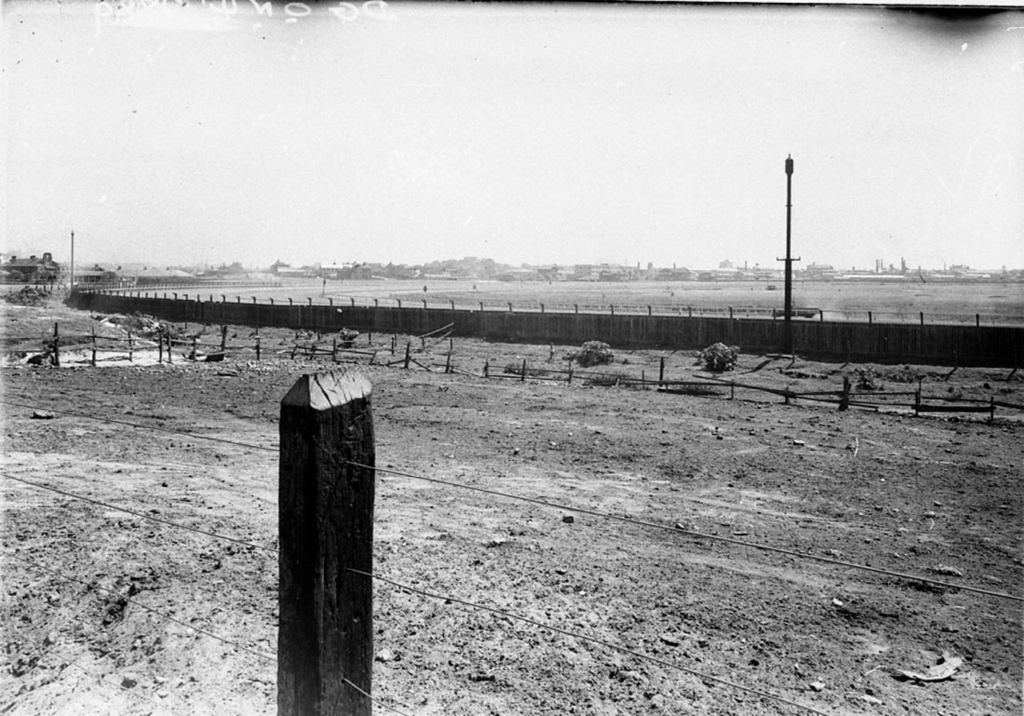Before its ongoing transformation to become a masterplanned community, the area now known as Victoria Park was swampland in the late 19th century and a racecourse in the early 20th century.
Read: William Redfern: Get To Know the Man Who Lent His Name to Redfern
In the early 1900s, the site was nothing more than a lagoon and swamp, until it was drained to create a racetrack.
The racecourse was privately owned by Sir James John Joynton Smith, a hotelier, racecourse and newspaper owner, who spared no expense in developing the site to become the greatest and finest pony horse racing course in Sydney.

Mr Joynton Smith had a reputation for being extensively involved in exclusive track racing. Before constructing the Zetland racecourse, he held a lease at the Brighton racecourse located in Rockdale, and later at the Forest Lodge racecourse in Glebe, which eventually transformed into Harold Park.
It was located on land bounded by Joynton Avenue, Epsom Road, Dowling Street and O’Dea Avenue, Waterloo.

The racetrack at Victoria Park became a popular destination for fans of horse racing, but it wasn’t long before other forms of racing began to take place at the site.
In 1908, a clay-and-cinder track, measuring 1.81 kilometres in length, was built around the horseracing course. This new track was used for speedway racing by both cars and motorcycles, and quickly became a favourite spot for fans of high-speed racing.

On 6 October 1908, the first motor racing meeting was held at Victoria Park. This was the start of an era of motor racing that would last for over a decade, and attract some of the most skilled and daring drivers of the time. The speedway at Victoria Park became known for its thrilling races, as drivers competed at breakneck speeds on the clay-and-cinder track.
During the Second World War, the site was repurposed as an aircraft factory, but after the war ended, it was transformed into a horse training course in 1945.
However, this was short-lived as British businessman Lord Nuffield purchased the racecourse in 1947 and converted it into a motor vehicle assembly facility in 1950.

The site was utilised by Nuffield Australia for vehicle production, which continued under the successors BMC Australia and Leyland Australia until the factory’s closure in 1975.
Read: Locals Continue Fight Against Privatisation Of Explorer St Public Housing
Today, the area is undergoing transformation into a master-planned community that encompasses a variety of functional community spaces and parklands, along with a range of housing options including affordable housing and live/work apartments. Additionally, there will be various shops to cater to the diverse needs of the community.
Published 25-April-2023




